As an Amazon Associate I earn from qualifying purchases.
Fiddleheads ferns are the most whimsical of spring’s bounty. Very few cooks are not captivated by their shape, which is among the most mesmerizing in nature — think of the nautilus shell, a hurricane, or the Milky Way.
But fiddleheads are ephemeral, their season is short. So making pickled fiddleheads is a great way to preserve them for the rest of the year.
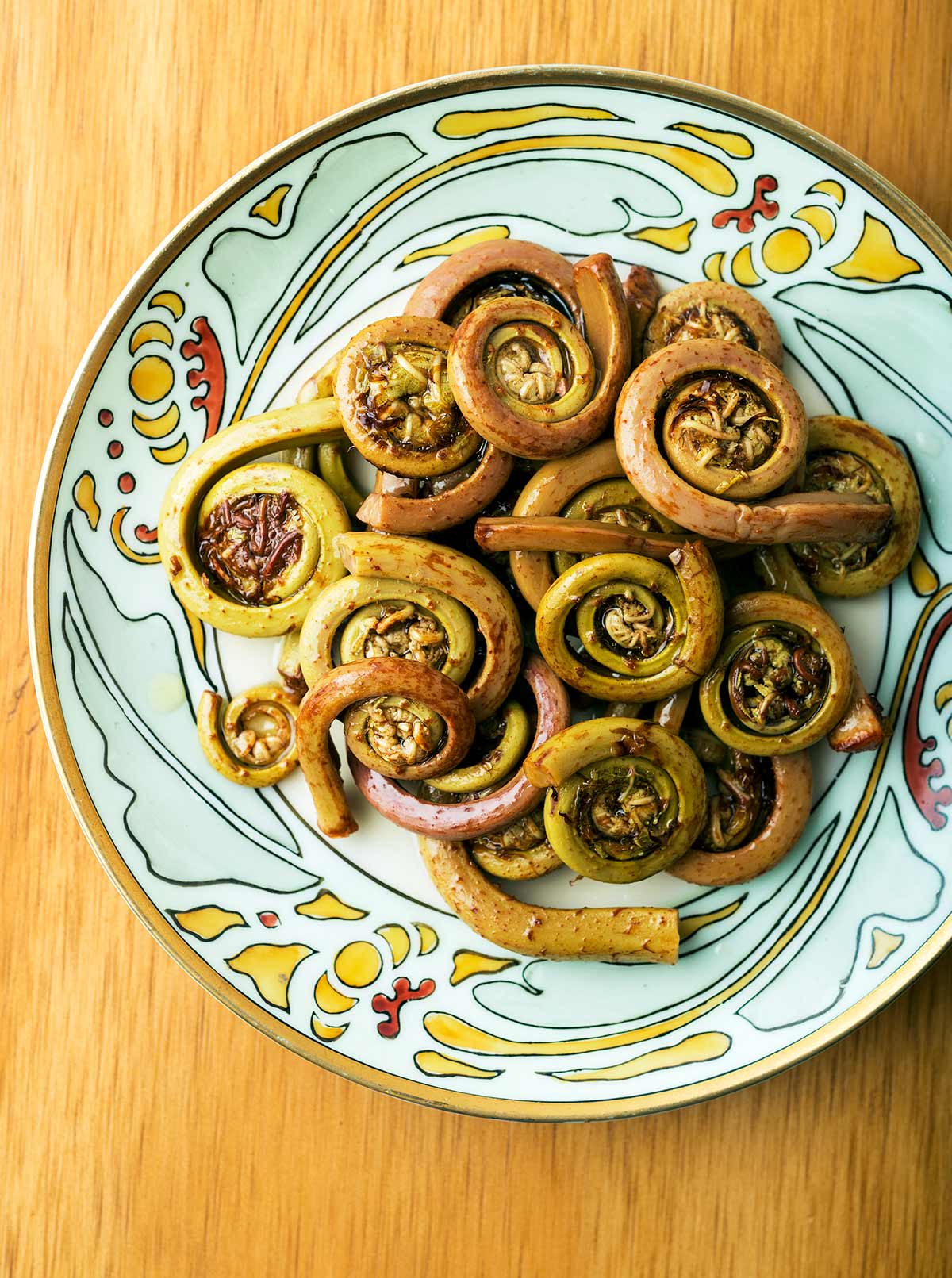
But you need to know that a fiddlehead is a shape, not a species. A great many ferns begin each year by sending up fiddleheads, but only two are generally eaten in this country: The ostrich fern in the East (and, oddly, British Columbia), and the lady fern in the West.
If you gather your own, you need to know the difference between these edible ferns and their inedible cousins, like, say, the sword fern. There is also the bracken fern, which is edible, but doesn’t produce fiddleheads.
The good news is you can buy them. Many markets sell fiddleheads, such as Whole Foods and Nugget here in NorCal, and you can sometimes find them at good farmer’s markets. You can also buy fiddleheads online.
Once you have your fiddleheads, what to do with them? I’ve cooked them with morels and ramps, in a simple fiddlehead stir fry, and sautéed with freshly caught trout. Fiddleheads need to be cooked, at least for a few minutes, and are great sautéed, stir-fried, batter fried, steamed, blanched, baked in casseroles, grilled… you get the point.
I always start by blanching my fiddleheads when I get them home. Boil in a large pot of salty water for 2 minutes, then plunge them into a bowl of ice water to cool. Cook briefly from there.
Fiddleheads will last about a week in the fridge, lightly wrapped in paper towels, which will turn brown for some reason while they’re in contact with the ferns. After a week, however, they get icky and slimy.
Pickled fiddleheads are the best way to preserve them, to my mind. You can of course do a regular vinegar pickle, but I prefer the old-style brine pickle: I like the tang that lacto-fermentation adds to fiddleheads. Lacto-wha? Don’t be scared. It’s just a brine pickle.
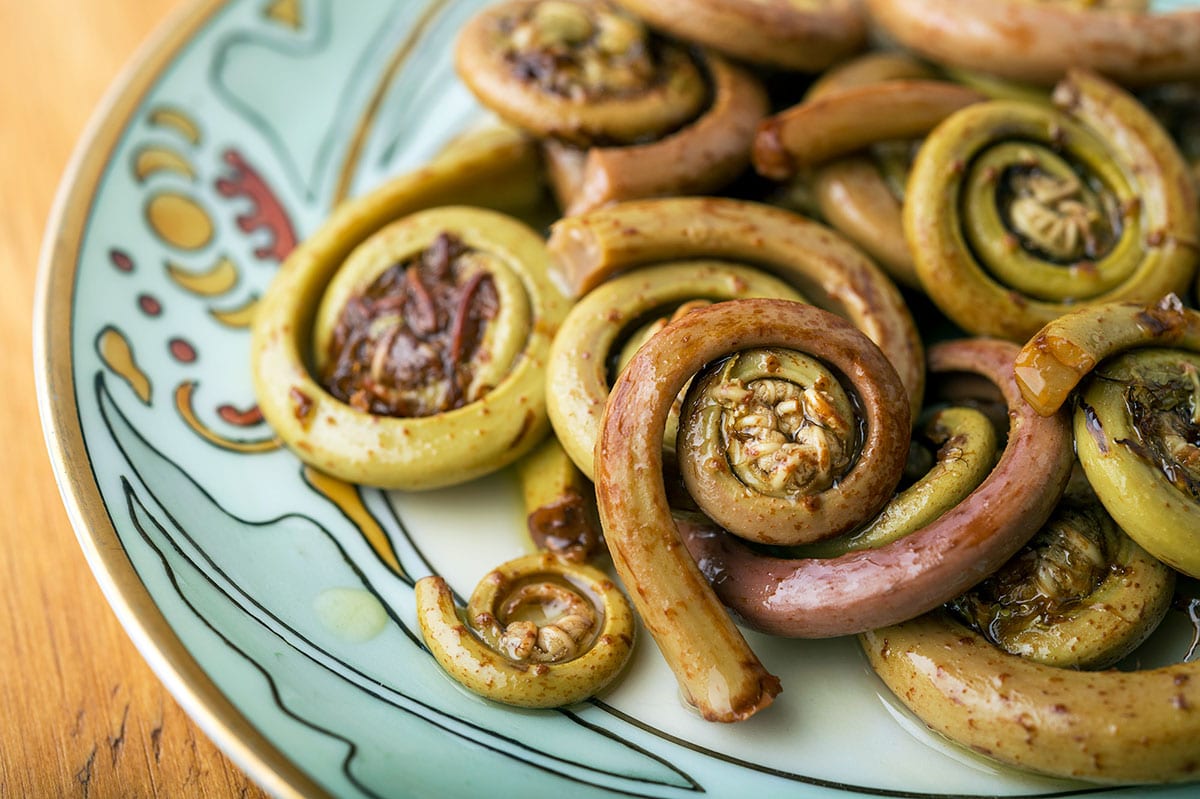
All you need to know is that you need the salt-to-water ratio that I give you in the recipe below, and you want to ferment below 75°F — above that temperature, weird things can happen. Let the pickles ferment for a week or two, and you are good to go.
What to do with your pickled fiddleheads? I just eat them, mostly with charcuterie like fromage de tête. Langdon adds them to a Sichuan stir fry, and I bet they’d be good in an omelet or Spanish tortilla. They last a year in the fridge, so you’ll have plenty of time to experiment.
Pickled Fidddleheads
Ingredients
- 1 pound fiddleheads
- 1 quart water
- 1/4 cup kosher salt
- 2 bay leaves
- 2 teaspoons cracked black peppercorns
- 2 teaspoons mustard seeds
- 1 teaspoon dried thyme
Instructions
- Trim the browned ends off each fiddlehead. Discard any that are mushy or crushed. Bring a large pot of water to a boil and salt it well. Boil the cleaned fiddleheads for 2 minutes, then plunge them into a bowl of ice water.
- Dissolve the 1/4 cup of salt in the quart of water. Fill a glass jar (I use a Mason quart jar) 3/4 of the way up with fiddleheads, which should be the whole pound. If not, use more jars and brine. Cover the fiddleheads with the brine by about an inch. Weigh them down. I use a narrow jelly jar set into the larger wide-mouth Mason jar, but a plastic bag filled with brine works well, as might a clean rock.
- Keep the jars in a cool, darkish place away from direct sunlight, which can rob the fiddleheads of their color. Let them ferment for at least a week, and up to 2 weeks. You might notice a little mold on the top of the brine: This is perfectly OK, just skim it off.
- When the fiddleheads taste crunchy and tangy, which I noticed after about 10 days, you are ready to store them. I fill pint jars with the spices -- split 50-50 -- and then repack them with fiddleheads. Pour over the brine from the original jars and screw on lids. Keep in the fridge indefinitely, although they will get tangier as time goes by.
Notes
Nutrition
Nutrition information is automatically calculated, so should only be used as an approximation.
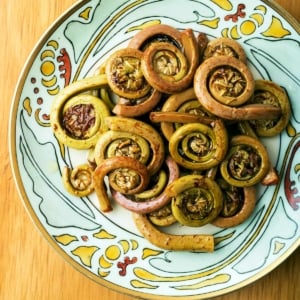
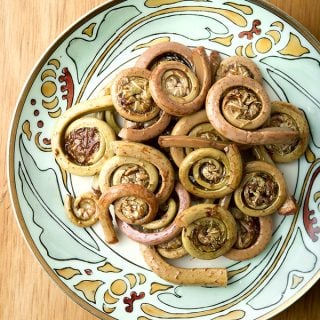
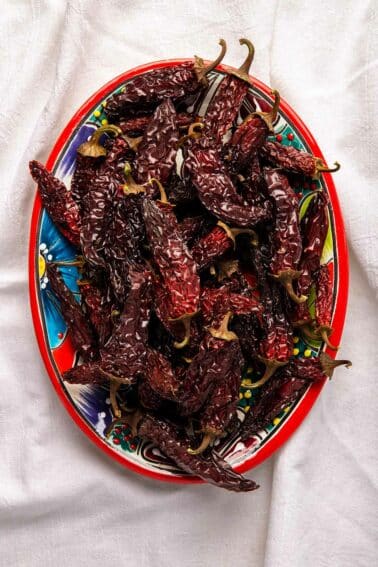
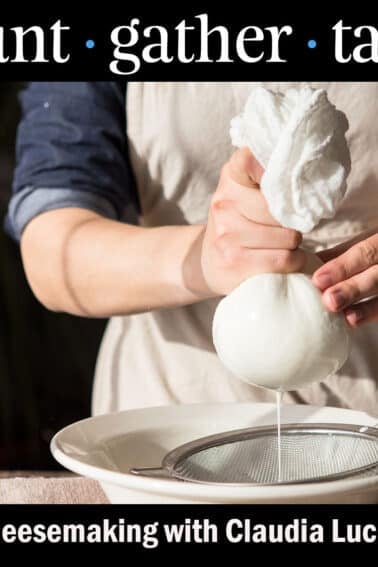


https://thatfermentedlife.com/basics/troubleshooting Kham yeast more likely than mold, safe!
I made these according to your recipe May, 2020 with the addition of lemon peel. Just opened them, they are fantastic! Crisp with a slight lemon tang. Will be doing more of these!
Most lacto fermenting I have done includes an air lock. This recipe does not, just a weight. Why is that? Is it because the boiling necessitates the addition of bacteria from the air afterwards? Would it work with an airlock?
Thanks!
The weight keeps the fiddleheads under the brine. No need for an airlock, but if you have one, go ahead and use it.
I’d love to add the fresh taste of lemon, as in your pickled pike recipe. Not sure it would come across or be the same in this straight-up brine though. What do you think? Fiddleheads are just coming up around here; can’t wait to make this for the first time
Tried this recipe last year with just a few minor tweaks. I put the spices in at the beginning and fermented them with the fiddleheads, and I also added 5-6 ramp tops for some added flavor. Resulting pickles were delicious!
Thanks for the recipe!
Dont you kill the LABS with boiling?
Sue: Not at all. The bacteria you want are in the air. You MUST boil fiddleheads, as they are toxic raw.
But they are LAB fermented – doesn’t this achieve the same effect as blanching/boiling? BTW the LAB’s are not at all in the air – they are on the veggie skin and not all veggies have them – Nightshades (like tomatoes) don’t. I always add cabbage leaves and shredded to assure a good LAB culture starts fast, no matter what the other veggies are – cabbage is the super-star here! Also, calculate your salt according to the total weight – solids and water together – I go with 1.5% to maximum 3% kosher or sea salt. DO NOT USE TABLE SALT! the iodine will kill the LAB’s.
I’ll be doing a ferment without boiling / blanching and will get back here later with the results…….SDP
Yes”’how to identify? I have ferns here in Maine. it’s just time to start harvesting soon. They charge $2-3 a pound tobuy. If found in the wild then…can they be divided and replanted?
Having trouble finding identification guides for ferns. Can you please post or send me a link? Also, for lactic ferment do you cover airtight or with cloth like acetic?
Thank you for your amazing work!
Eastern ferns are readily available – at least in New England! Just got some from my parents’ property in Vermont. Many grocery stores around here carry them for the 4-6 weeks they’re in season.
A question though: is there any reason not to add the spices before fermentation? I’ve had great luck with this pickled corn recipe (https://www.bonappetit.com/recipe/pickled-corn) but noticed that they add the spices before, whereas this fiddlehead recipe calls for adding them after.
What I meant to say is that ostrich fern fiddleheads also grow wild in northern Saskatchewan.
Thanks for the recipe. I might try it this year. Also, fiddleheads are in northern Saskatchewan, which is where I buy mine from.
Any other edible ferns in the East? Cant say that I have ever seen Ostrich fern.
Nossif: It’s about 34 grams, or about 1 1/4 ounce of salt, to the quart.
what would you say the weight ratio of water:salt would be, in case i want to scale up/down.